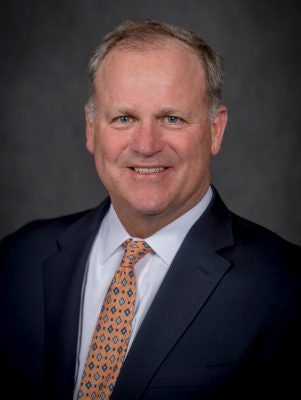The Association of Governing Boards of Universities and Colleges (AGB) released a statement on Wednesday focused on justice, equity and inclusion. The statement is designed to help institutions address such matters on their campuses.
 Henry Stoever
Henry Stoever“The AGB Board of Directors Statement on Justice, Equity and Inclusion and Guide for Implementation is critically important for all organizations, regardless of type — whether you’re in higher education, corporations, government, private sector or other — because these values are critically important to advancing our society, our institutions and our economies and communities around the world,” said Henry Stoever, AGB president and CEO.
The statement titled, “AGB Board of Directors’ Statement on Justice, Equity, and Inclusion, and Guidance for Implementation” offers three key strategies, spanning not just boards but also the surrounding communities.
They include:
Developing and applying an equity lens in the board’s governance, structures and processes; Applying a justice, equity and inclusion lens throughout the institution, and contributing to social justice and equity in the community in which the institution is located
“The report first of all tries to describe the landscape in higher education regarding issues of equity and to clarify why focusing on equity is such an important thing for the students themselves, for the institution and for the nation and, if you want to go farther, even for the world,” said Dr. Eileen Wilson-Oyelaran, AGB senior consultant and president emerita of Kalamazoo College.
Wilson-Oyelaran was the statement’s primary author.
The AGB Board of Directors’ Statement comes at a tumultuous time for higher education due to a host of factors, ranging from the effects of the COVID-19 pandemic, demographic and enrollment fluctuations, and increasing skepticism regarding the relationship between higher education and minority populations, said AGB officials.
They argue that colleges and universities need to make the case for justice, equity and inclusion on campuses, including the “business case.”
“If institutions are to survive, they must have a record of success educating the individuals who enter their doors. Demographic projections indicate that future students will come from increasingly diverse racial, ethnic, and economic backgrounds. Institutions must put strategies in place today that focus on the success of all students, especially first-generation students and students of color,” the report noted.
 Dr. Eileen Wilson-Oyelaran
Dr. Eileen Wilson-OyelaranThe document also lists questions related to the aforementioned strategies, asking educational leaders, for example, if their board composition “reflect the skills, insights, and perspectives required to oversee our priority of justice, equity, and inclusion for all institutional stakeholders?”
Another question asks if the master campus plan displaces families and compromise communities.
“There are going to be some institutions that will go right to the questions because they don’t have to be convinced that this is an issue of significance. They’ve already recognized this as an issue of significance,” Wilson-Oyelaran said. “There are going to be some institutions for whom the first part of the statement, which explains why this is important, may be a catalyst for getting them to begin to approach this work.”
The statement was prompted by AGB’s 100th anniversary, Stoever said.
He said that it was critically important to tackle the issue of diversity in the board room.
“It’s important to define the word diversity, especially within the context of diversity in the board room,” Stoever said. “Diversity viewed from a broad lens is to include not only race, gender and ethnicity but also diversity from the context of mindset, perspectives, experiences, backgrounds, education, professions, things of that nature.”
Added Wilson-Oyelaran:
“I think what the board wanted to do was not merely issue a statement but also provide a roadmap for getting started on this work or moving forward in this work,” she said. “There are over 3,000 institutions of higher education in the U.S. They have varying histories, very different places on this equity, inclusion and justice journey. So we hope the document will serve institutions wherever they are on this process of becoming more equitable and more inclusive.”
Arrman Kyaw can be reached at [email protected]





















